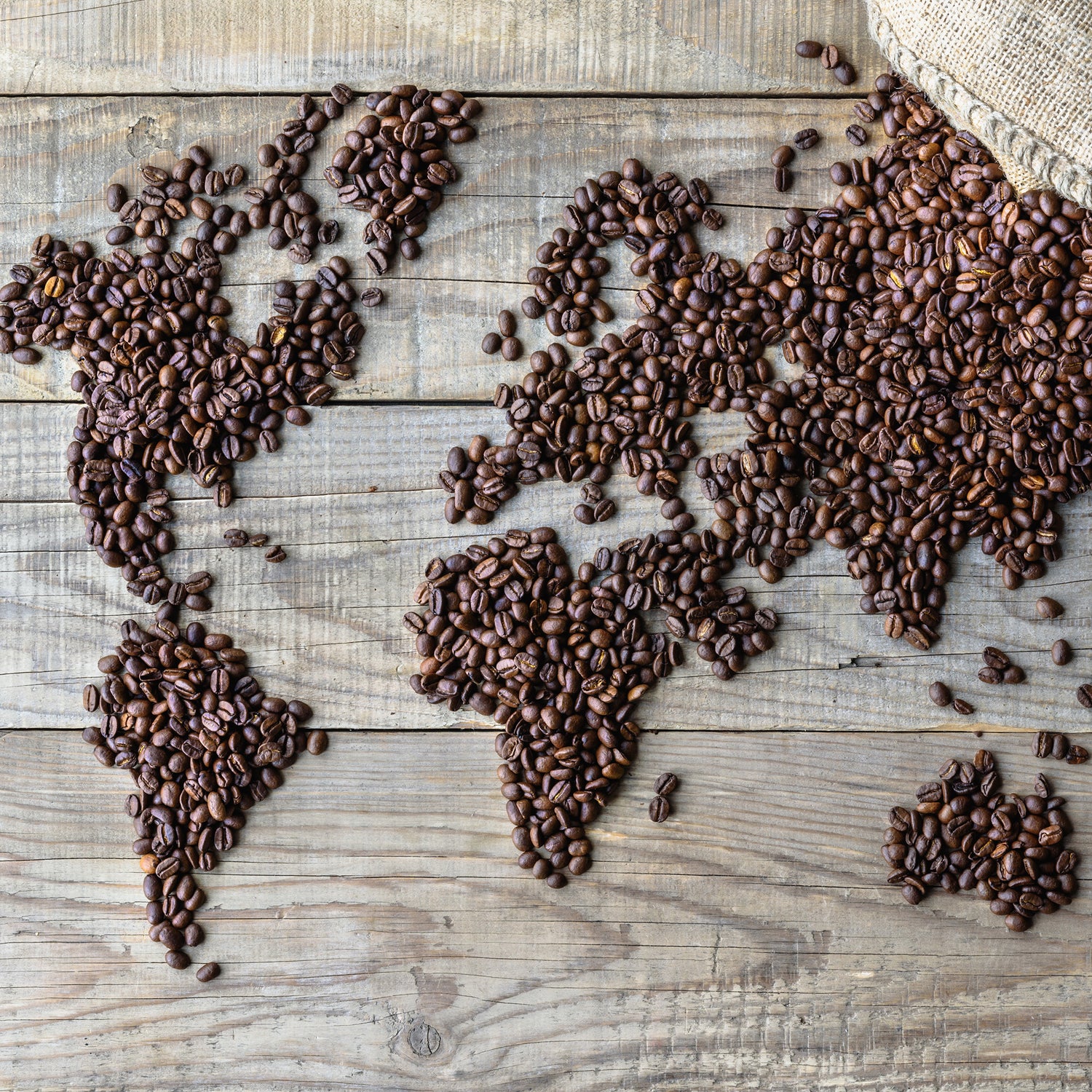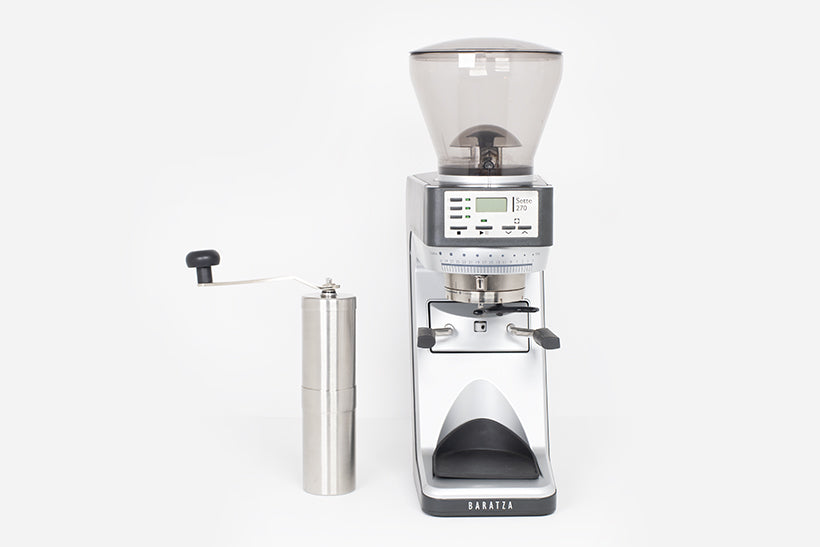It's the size of your grinds that matters, not the size of your grinder.
The grinder is the most important piece of coffee making equipment
I need at least one great cup of coffee every day to keep me going, and there are a few important things needed to make one:
- Good quality, freshly roasted coffee beans
- A brewer
- The right temperature water
- The correct coffee-to-water ratio
- But most importantly, a good grinder
A good grinder is arguably the most important piece of coffee making equipment, and can transform your coffee from just ok, to truly amazing! Here I'll explain why.
Beans - Whole Bean vs Ground
Ideally you should use freshly roasted whole beans, and grind them yourself. The reason for this is that once coffee beans are ground up and exposed to oxygen, the coffee starts to oxidize. It's this oxidation process that makes coffee go stale, quickly. Freshly roasted whole beans stay fresher for much longer, as the surface area is much smaller, and no oxygen can get inside the bean. Pre-grinding coffee before packaging, releases some of the aromas and flavours which you will miss out on in the cup. So the smaller the time between grinding and brewing, the better.
Another benefit of buying whole bean coffee is that you can grind for any brew method. One day you might want a pour over, the next day you might want a French Press coffee, or cold brew. Or maybe you're using your drip machine for friends and family. Grinding your own beans gives you that flexibility, as well as additional freshness.
What is Extraction?
The quality of a cup of coffee is driven by extraction, i.e. the amount of coffee flavour that has dissolved from the coffee grounds into the water. Get the extraction right, and you'll have an amazing cup of coffee. Rich, fresh, flavourful, it really makes your day. On the other hand if you over or under extract your coffee, you're going to end up with a terrible cup.
The reason that grinders go from coarse (French Press), to medium (filter), to fine (espresso), is to control extraction. A poor cup will be under or over extracted.
- Under-extraction is when you extract too little flavour from your coffee, which means your grind is too coarse for your brew method (i.e. there isn't enough surface area). This will result in a sour, acidic, and sometimes salty taste.
- Over-extraction is when you extract too much flavour from your coffee, which means your grind is too fine for your brew method (i.e. there is too much surface area and more coffee is being dissolved). This will result in a bitter, dull cup, with muted flavours.
The reason for the taste differences, is that the hundreds of compounds that make up coffee all dissolve at different rates, acids first, then sugars and more bitter substances later. So to get a great cup, there has to be a balance. This is why shorter brewing methods (espresso) need more surface area than longer brewing methods (French press).
In scientific terms, the extraction yield is the total dissolved solids (TDS) divided by the mass of the coffee grounds. An ideal extraction yield is around 20%-21%. Under 18% is considered under-extracted, and over 23% is over-extracted.
Blade vs Burr Grinders
I'll keep this short. Don't grind your coffee with a blade grinder. The end.
OK, here's why. A blade grinder might be fine for spices and other foods, but with coffee it will just smash it into pieces of all different sizes, which will extract at completely different rates, and make a terrible cup of coffee. You're better off buying pre-ground than using a blade grinder, and I don't say that lightly ha ha!
A burr grinder (flat burr or conical) uses uniform pressure and grind size control to give you a consistent grind size for your particular brewing method. This is the only way to get consistently good coffee every single time.
Manual vs Electric
There are both manual and electric coffee grinders available, obviously electric is faster and more efficient. But many people enjoy manually grinding at home or when outdoors, using a hand grinder. A good entry level electric grinder starts at about $200 for the Baratza Encore, and can go higher than $1,000 for a really good espresso grinder. A good hand grinder like the Porlex or Timemore C2 starts at around $99.
Dialing in The Right Grind Size
Once you get a grinder, you'll have to calibrate it for your particular brew method, be patient, this can take a few tries. Firstly look up the manufacturers recommended settings, as they will have done most of the hard work for you (see below for our chart). But if the beans you have are still not tasting perfect, start with the recommended setting and then go finer each time until you taste some bitterness or astringency (dryness), then dial it back a couple of settings. Taste and take notes. I find this generally works for most grinders.
Espresso grinders are a bit trickier to calibrate, as small adjustments make a difference to dosed weight and extraction. I suggest finding a video tutorial for your particular grinder/espresso machine combination. I find this video from Clive Coffee very useful in describing the nuanced adjustments:
Popular Grind Sizes / Brew Methods
There are 4 main / popular grind sizes:
- Coarse: Suitable for Cold Brew & French Press - similar to freshly ground pepper or sea salt in texture
- Medium: Suitable for V60 / Chemex / Automatic Drip - similar to sand in texture, a great starting point for any filter or pour over method. Personally I find this also works better for cold brew than a coarse grind, but that's just me.
- Medium Fine: Suitable for Aeropress - slightly finer than for a pour-over, as it only takes 2 minutes to brew rather than the 4-5 minutes of a pour-over
- Fine: Suitable for Espresso & Moka Pot - finer than table salt, but coarser than flour.

There are of course an infinite range within all of these settings, and also extra fine for those who like Turkish coffee.
Don't forget to clean your grinder every 4-6 weeks to keep the burrs from getting clogged, especially if you are using darker roasted coffee which is more oily.
Hope this helps! Here are some of the settings from popular grinders (click on the chart to zoom in). I highly recommend Baratza, they make very good grinders that are incredible value for money.





4 comments
Hi Julie, use a coarse grind setting for percolator coffee
Hello do you think medium grind would be best for perculated coffee?
Hi Tanya, Regular/Medium works well in reusable pods.
Hi:
I have a Keurig with reusable pods. What grind size would you suggest?
Thanks!